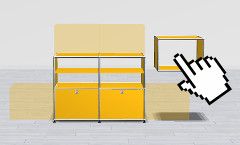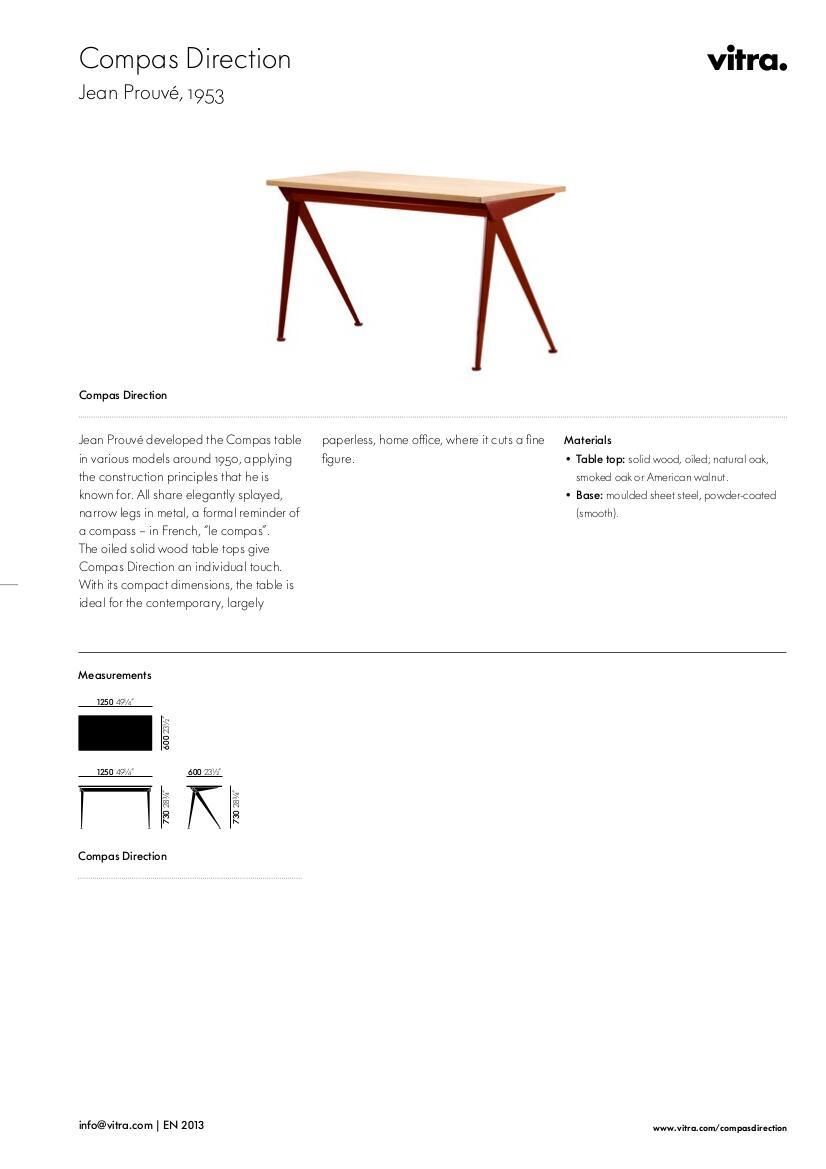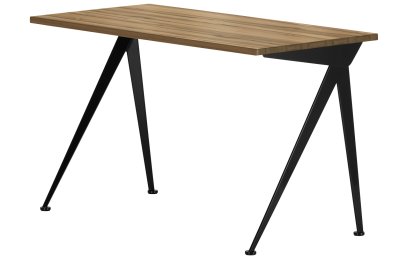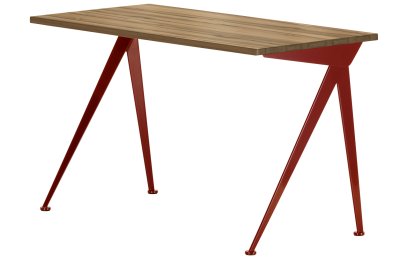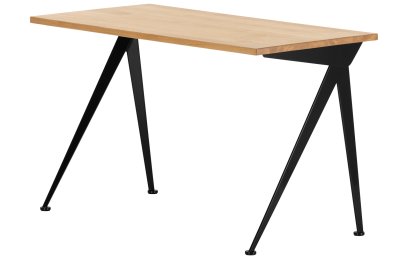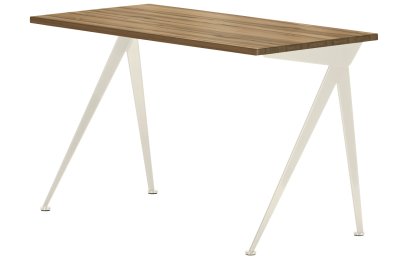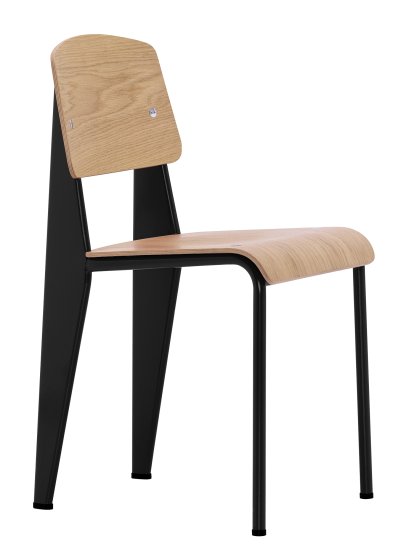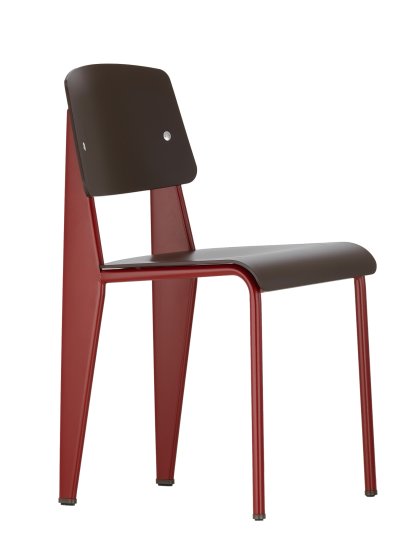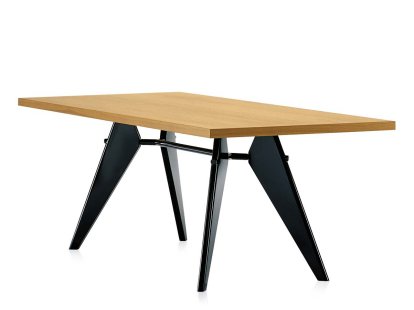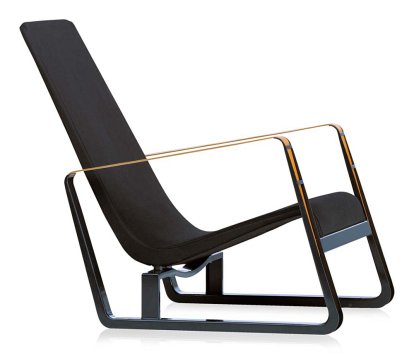Compas Direction Desk
by Jean Prouvé, 1953 — from CHF 2’925.00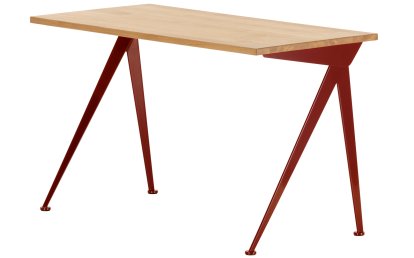
has been added to your wishlist.
Details
FAQ
Is the Vitra Compas desk part of a collection?
Yes. Responding to a public tender for furnishing educational institutions - from kindergarten to universities - Jean Prouvé developed a furniture series comprising tables, chairs, and beds, with a base reminiscent of the legs of a compass.Or rather designed a series of furniture series, there is, for example, an Ensemble Maternelle with a Compas school desk (table and chair combined in one) and an ensemble for student dormitories.Initially their name was rather unspecific and unimportant, for example, Cafétéria No. 512; however, the Cafétéria No. 512 table quickly moved from civic and educational facilities to private homes while the corresponding desks remained in the study rooms and those of the executives.And over time the whole collection became popular in domestic setting and today whether for furnishing common rooms, canteens dormitories, or domestic spaces, the pieces of furniture designed at the time are known today under the name Compas.
Why is the desk edition from Vitra called Compas Direction?
The first Compas models were initially produced in Jean Prouvé's workshop before production shifted to the prefabricated workshops of Maxéville-Studal. Vitra released the Compas table from 2002 to 2009 - essentially the Cafétéria No. 512 under the new name Compas.And since 2003, the Swiss furniture company has released a specific model of the Compas desk, which is marketed under the name Compas Direction. Whether the model, as its name implies, was ever used in the management departments of schools or universities is however unknown
Are there any other versions of the Compas desk available?
Yes, there are other versions of the Prouvé desk that were manufactured between 1953 and 1956, and which are referred to as related "table types" such as desk, secretary or writer's table. Today it is relatively difficult to say how Jean Prouvé actually differentiated between them.The different versions all have one thing in common - the triangular, asymmetrical base, which consists of two table legs of different lengths - but the models are also available in bent sheet steel or in a tubular version (1955).The table top comes in different shapes: curved and rounded (version "Grande aile courbé" from 1958 released by ACPM), rectangular and in different sizes from 192 cm to 160 and 140 cm to 125.Finally, some desk models also feature drawer elements designed by Charlotte Perriand and in which the Compas desk is available with a simple drawer, with a side element consisting of three drawers or with two drawers directly under the table top.These specifications give the Compas models their names - Compas secretary, Compas writing case - although Prouvé never used this name himself.
What is the difference between the Compas table and the Compas desk?
Characteristic of the Compas series is the base, which consists of angularly bent, painted sheet steel and is reminiscent of an inverted V like two ends of a compass legs.Similar to the Compas desk, the Compas table itself is available in different versions: classic, curved, as a folding table with seats for 2 to 8 people. Two important criteria separate the desk from the table: the opening angle of the table legs and the attachment of the base.With the Compas table, the underframe is fixed in the middle of the table with a transverse axis along the width of the table. The angle forms an inverted symmetrical V with a diagonal opening.The Compas desk, on the other hand, has an underframe with asymmetrical angles like an acute-angled triangle: the table legs at the front and back are different lengths. In addition, the underframe is attached to the table top at the rear, away from the seated person's body.The Compas table is also available in different colours and shapes of table top and table legs. The Compas desk is only issued with an oiled solid wood top, but also in different shapes and sizes. The base is usually black and usually has drawers.
How do I recognize an Original Compas Direction?
Whether Compas table or Compas desk, the base always obeys the same structural principle: A triangular construction similar to compass legs constructed from bent steel or steel tubing that supports the table top. The ends of the compass legs end in a spherical shape. The table top, in turn, comes in different shapes, colours and materials.If you've found a table model called Compas by Jean Prouvé, make sure that it was made by Ateliers Jean Prouvé or by ACPM-Studal between 1948 and 1956. From 1956 the Jean Prouvé workshops were renamed Maxéville Studal prefabricated workshops (ACPM Studal), which continued to produce the models in series until 1959.After that, however, they were only exhibited and marketed for the gallery owner Steph Simon, who ceased trading in 1974. Subsequently, the production of the Compas table bases was stopped. Until 2002 when Vitra would temporarily re-issue the Compas table until 2009 in line with the Prouvé family wishes.The Compas desk in contrast has been in production with Vitra since 2003.It is therefore still possible to buy an original Compas desk by Jean Prouvé; but Vitra is the only company that produces one of the original models of the Compas desk - and that under the name Compas Direction.

